This category has been viewed 6605 times
Healthy Indian Recipes > Chronic Kidney Disease Indian recipes
12 Chronic Kidney Disease Indian Recipes Recipes
Last Updated : 03 September, 2025

Table of Content
Indian recipes for Chronic Kidney Disease | kidney friendly Indian recipes
Chronic kidney disease (CKD) is a condition in which the kidneys are damaged and cannot filter blood as well as they should.
What to eat with chronic kidney disease
Eating well with chronic kidney disease (CKD) is essential for managing the condition and maintaining overall health.
strawberry apple yoghurt smoothie recipe | apple strawberry smothie for chronic kidney disease | strawberry apple curd milkshake
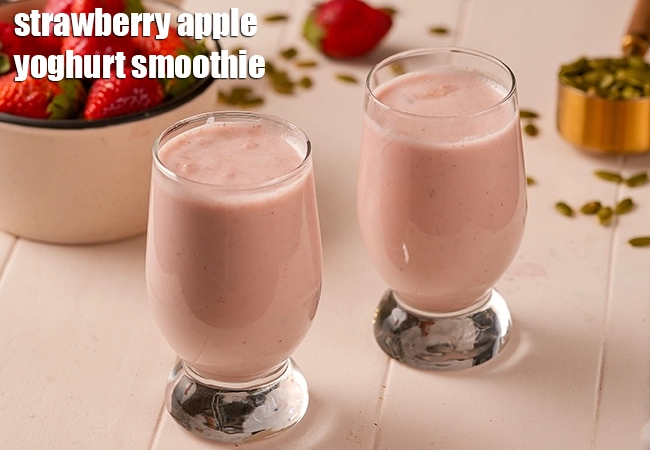
1.Understanding Dietary Restrictions for Chronic kidney disease
For individuals with CKD, it's crucial to manage dietary intake to protect kidney function. This typically involves limiting certain nutrients such as protein, phosphorus, potassium, and sodium. The amount of restriction may vary based on the stage of CKD, so working with a healthcare provider or dietitian is important to tailor dietary needs. Focusing on food quality is just as important as food quantity.
2. Protein Choices
While protein is essential for muscle maintenance and overall health, in CKD, the intake might need to be regulated. Lean proteins, such as chicken, turkey, fish, and egg whites, are better choices compared to red meats and processed meats, which can be higher in phosphorus and sodium. Plant-based proteins like lentils, beans, and tofu can also be included but should be consumed in moderation depending on phosphorus levels.
3. Managing Potassium Levels
Potassium is vital for heart health, but too much can be harmful for those with CKD. Foods high in potassium should be consumed cautiously. Opt for lower potassium fruits and vegetables like apples, berries, white rice, and cauliflower. It's also beneficial to prepare certain vegetables by boiling them to reduce potassium content before consumption.
healthy sama vegetable pulao recipe | vegetable sama pulao for chronic kidney disease | vegetable sama recipe It is made with sama rice, a type of millet that is low in phosphorus and potassium, two minerals that can build up in the blood of people with CKD.
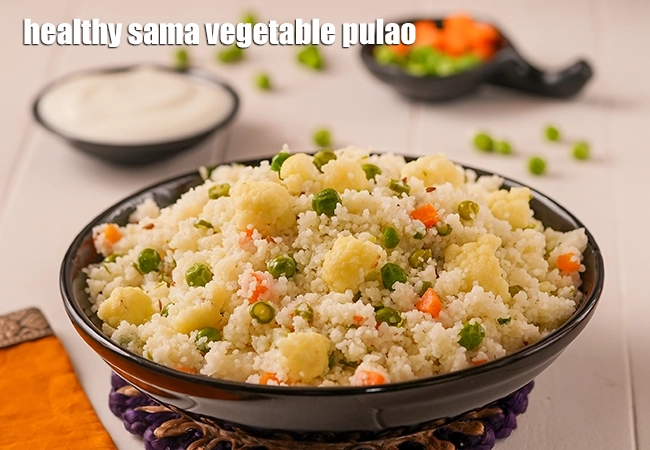
4. Phosphorus Control
High phosphorus levels can lead to bone disease and other issues in CKD patients. Limit dairy products, nuts, seeds, and colas, which tend to have high phosphorus levels. Instead, consider alternatives like almond milk (check for additives) and lower phosphorus snacks like popcorn or rice cakes. Reading food labels becomes essential to monitor phosphorus additives, often found in packaged and processed foods.
5. Sodium Intake
Reducing sodium is crucial to manage blood pressure and prevent fluid retention in CKD. Fresh, whole foods are generally lower in sodium compared to processed or canned options. When cooking, use herbs and spices for flavor instead of salt. Preparing meals at home allows for better control over sodium content and encourages healthier eating habits.
guvar gatta sabzi recipe | gavar gatta sazbi for chronic kidney disease | healthy gatta and gavarfhali ki sabzi This flavorful guvar (cluster beans) and ghatta dish is carefully prepared with minimal salt, as recommended for those following a CKD diet.
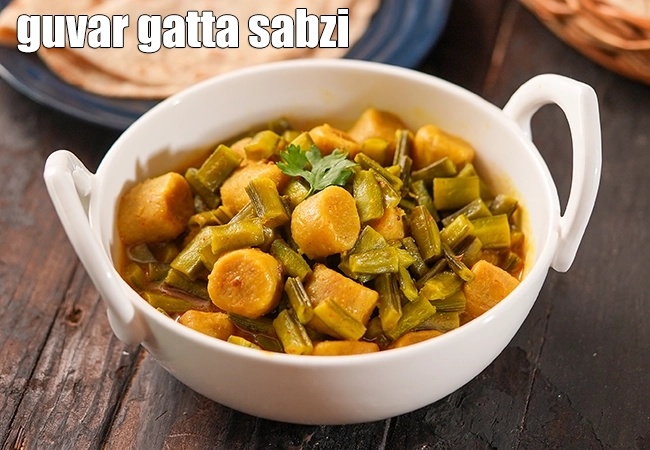
6. Hydration
Staying hydrated is important, but fluid intake might need to be monitored depending on the stage of CKD and any co-existing conditions like heart disease. If advised to limit fluids, focus on hydrating foods such as cucumbers and watermelon, and talk to your healthcare provider about the best hydration plan for your situation. Remember, maintaining a balanced diet while considering your unique health needs is key to managing CKD effectively.
semiya veg upma recipe | whole wheat vermicelli vegetable upma | healthy semiya upma | low salt semiya upma for hypertension is a low salt Indian breakfast especially for high blood pressure patients.
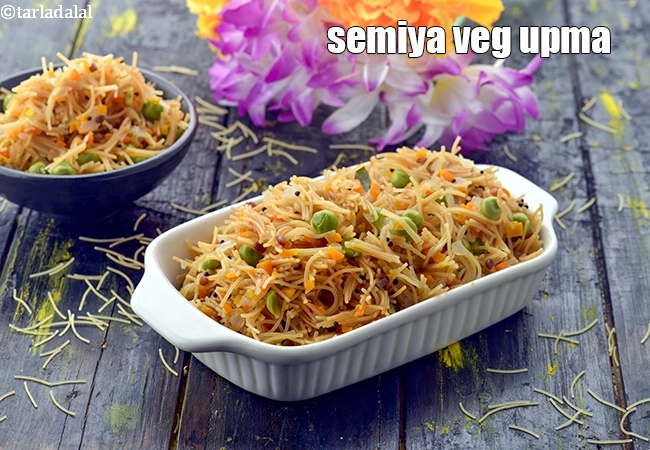
Potassium Content of Indian Foods
HIGH POTASSIUM FOODS (>300 mg/ 100 g) | MODERATE POTASSIUM FOODS (100-200 mg/ 100 g) | LOW POTASSIUM FOODS (<100 mg/ 100 g)
|
| HAVE SMALL PORTIONS AS ADVISED (after leaching)* | CONSUME TWICE OR THRICE A WEEK | CONSUME IT FREQUENTLY |
| Citrus fruits | Figs | Cucumber |
| Apricots | Grapefruit | Cauliflower |
| Banana | Mango | Brinjal |
| Dates | Papaya | Onion |
| Muskmelon | Peach | White Radish |
| Orange juice/ Sweet lime juice | Onion | Cabbage |
| Tomatoes | Prunes | Lettuce |
| Sweet Potatoes | Raisins | Capsicum |
| Yam | Cherries | Corn |
| Beans | Broccoli | Ladies finger |
| Beetroot | Green Peas | Bottle gourd (lauki) |
| Potatoes | Zucchini | French beans |
| Carrot | Celery | Apple |
| Spinach | Mushroom | Berries |
| Fenugreek | Watermelon | Pear |
| Other leafy greens | Almonds | Pineapple |
| Whole chana | Walnuts | Plum |
| Rajma | Cashewnuts | Radish |
| Tur dal | Pumpkin seeds | Radish leaves |
| Flax seeds | Water chestnut | |
| Pumpkin | ||
| Cluster beans |
*Leaching is a process in which foods are washed, soaked in water and drained to remove excess potassium.
Conclusion
In sum, managing CKD through diet involves balancing protein, potassium, phosphorus, sodium, and hydration. Working with a healthcare professional can help create a personalized meal plan. Would you like more specific meal ideas or recipes tailored for CKD?
low in sodium and potassium soup for kidney patients
vegetable ginger soup recipe is a flavorful and nutritious dish that can be enjoyed by individuals with chronic kidney disease (CKD). It is packed with essential vitamins, minerals, and antioxidants, while being low in sodium and potassium, making it a kidney-friendly choice. The ginger in the soup adds a unique flavor and may also offer potential health benefits, such as aiding digestion and reducing inflammation.
vegetable ginger soup recipe | ginger vegetable soup for chronic kidney disease | healthy ginger vegetable soup

Indian snacks for those with Chronic kidney disease (CKD)
jowar mooli muthia recipe | jowar mooli muthia for chronic kidney disease | healthy mooli jowar muthia | Jowar is a gluten-free grain that is low in phosphorus and potassium, two minerals that can build up in the blood of people with CKD. Fenugreek leaves are a good source of fiber, vitamins, and minerals, and they may also help to improve blood sugar control. Jowar methi muthia is a healthy and satisfying snack that can be enjoyed by people with CKD.
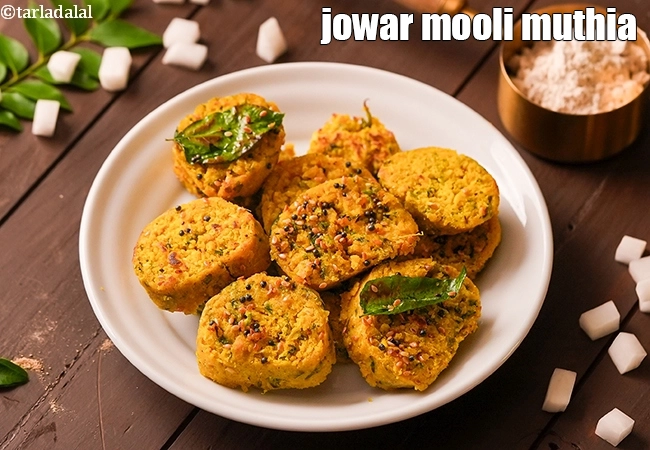
carrot dosa recipe | carrot dosa for chronic kidney disease | healthy carrot buckwheat dosa | The fiber in buckwheat and carrots helps to regulate blood sugar levels and promote healthy digestion. The protein in buckwheat helps to build and repair tissues, while the antioxidants in both ingredients help to protect cells from damage. Carrots are also a good source of potassium, which is important for maintaining healthy blood pressure. Together, these ingredients make a nutritious and healthy carrot buckwheat dosa that can help manage CKD.
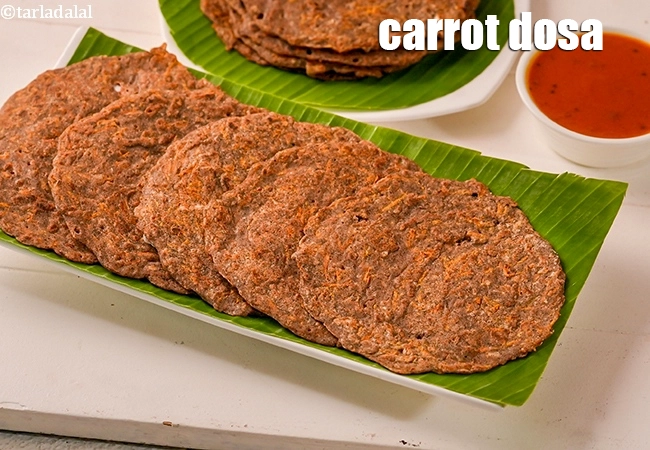

Carrot dosa recipe | carrot dosa for chronic kidney disease | healthy carrot buckwheat dosa |carrot dosa is … More..
Recipe# 2931
30 January, 2015
calories per serving
sprouted and boiled matki recipe | boiled matki sprouts for kidney, fatty liver, diabetes, kidney stone, blood pressure … More..
Recipe# 206
25 November, 2019
calories per serving
fruity bean salad recipe | beans and fruits salad for chronic kidney disease | healthy fruits and beans … More..
Recipe# 2987
07 May, 2014
calories per serving
healthy sama vegetable pulao recipe | vegetable sama pulao for chronic kidney disease | vegetable sama recipe | … More..
Recipe# 7900
02 April, 2025
calories per serving
wheat puff and oats bhel recipe | oats and wheat puff bhel for chronic kidney disease | nutritious … More..
Recipe# 7904
11 February, 2025
calories per serving
vegetable vermicelli idli recipe | vermicelli idli for chronic kidney disease | healthy vermicelli vegetable idli | with … More..
Recipe# 7906
27 January, 2025
calories per serving
guvar gatta sabzi recipe | gavar gatta sazbi for chronic kidney disease | healthy gatta and gavarfhali ki … More..
Recipe# 7903
23 January, 2025
calories per serving
jowar mooli muthia recipe | jowar mooli muthia for chronic kidney disease | healthy mooli jowar muthia | … More..
Recipe# 7905
27 January, 2025
calories per serving
rice and palak appe recipe | rice and palak appe for chronic kidney disease | healthy rajgira palak … More..
Recipe# 7898
13 January, 2025
calories per serving
vegetable ginger soup recipe | ginger vegetable soup for chronic kidney disease | healthy ginger vegetable soup | … More..
Recipe# 7901
23 January, 2025
calories per serving
calories per serving
Carrot dosa recipe | carrot dosa for chronic kidney disease | healthy carrot buckwheat dosa |carrot dosa is … More..
calories per serving
sprouted and boiled matki recipe | boiled matki sprouts for kidney, fatty liver, diabetes, kidney stone, blood pressure … More..
calories per serving
fruity bean salad recipe | beans and fruits salad for chronic kidney disease | healthy fruits and beans … More..
calories per serving
healthy sama vegetable pulao recipe | vegetable sama pulao for chronic kidney disease | vegetable sama recipe | … More..
calories per serving
wheat puff and oats bhel recipe | oats and wheat puff bhel for chronic kidney disease | nutritious … More..
calories per serving
vegetable vermicelli idli recipe | vermicelli idli for chronic kidney disease | healthy vermicelli vegetable idli | with … More..
calories per serving
guvar gatta sabzi recipe | gavar gatta sazbi for chronic kidney disease | healthy gatta and gavarfhali ki … More..
calories per serving
jowar mooli muthia recipe | jowar mooli muthia for chronic kidney disease | healthy mooli jowar muthia | … More..
calories per serving
rice and palak appe recipe | rice and palak appe for chronic kidney disease | healthy rajgira palak … More..
calories per serving
vegetable ginger soup recipe | ginger vegetable soup for chronic kidney disease | healthy ginger vegetable soup | … More..

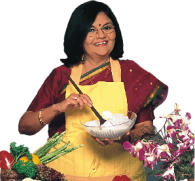
Related Recipes
Follow US
Recipe Categories
- Vitamin B12 Cobalamin Rich Recipes 33 recipes
- Low Calorie, Weight Loss Indian Recipes 421 recipes
- Low Cholesterol Indian Recipes 308 recipes
- Healthy Indian Breakfast 373 recipes
- Indian Diabetic recipes 559 recipes
- Indian Pregnancy recipes 461 recipes
- Zero Oil Indian Recipes 133 recipes
- Iron Rich Indian recipes 268 recipes
- Healthy Indian Acidity recipes 137 recipes
- Healthy Sabzis 108 recipes
- Indian Healthy Veg Snack 276 recipes
- Healthy Heart Recipes 415 recipes
- Healthy Veg Indian Soups 74 recipes
- Calcium Rich Indian Recipes 373 recipes
- High Blood Pressure Indian Recipes 103 recipes
- Healthy Indian Salads Recipes 137 recipes
- Low Carb Indian Diet, recipes 163 recipes
- Hypothyroidism Diet 63 recipes
- Arthritis Diet 68 recipes
- High Protein Indian recipes 95 recipes
- Vitamin K Diet 42 recipes
- Fatty Liver Diet 39 recipes
- PCOS 136 recipes
- Gluten Free Veg Indian 196 recipes
- High Fiber 328 recipes
- Indian Cancer Patients 275 recipes
- Jaundice Diet 45 recipes
- Sprouts 61 recipes
- Typhoid 43 recipes
- Irritable Bowel Syndrome (IBS) 23 recipes
- Kidney Stone Diet 10 recipes
- Home Remedies 213 recipes
- Senior Citizen 195 recipes
- Healthy Indian Drinks and Juices 213 recipes
- Diet for Dialysis 10 recipes
- Gout Indian Recipes 17 recipes
- Potassium Rich 80 recipes
- Vegan 195 recipes
- Indian recipes to treat Vomiting 8 recipes
- Forever Young Diet, Anti Aging Indian Diet 255 recipes
- Antioxidant Rich Indian 445 recipes
- Vitamin B1 Rich Indian Foods, Recipes 101 recipes
- High in Omega 3 Fatty Acids 32 recipes
- Zinc Rich Foods 55 recipes
- Vitamin A Rich, Beta Carotene, Retinol 89 recipes
- Malaria Diet 19 recipes
- Magnesium Rich 94 recipes
- Healthy Indian Dinner 85 recipes
- Vitamin C Rich Indian recipes 118 recipes
- Low Veg Glycemic Index 86 recipes
- Lower Blood Pressure Salads 8 recipes
- Healthy Indian Lunch Recipes 29 recipes
- Lactation 25 recipes
- Vitamin E Rich 51 recipes
- Hyperthyroidism Diet 47 recipes
- Vitamin B3, Niacin Rich 41 recipes
- Post Surgery Diet 42 recipes
- Selenium 27 recipes
- Phosphorus Rich Indian Recipes, Foods 74 recipes
- Lower Blood Pressure Desserts Sweets 14 recipes
- Copper 15 recipes
- Foods Rich in Vitamin B2 Riboflavin 22 recipes
- Vitamin B6 Diet 36 recipes
- B Vitamins 231 recipes
- Vitamin B9 Rich Folate 50 recipes
- Marathoners, Endurance Athletes, Triathlete 225 recipes
- Manganese Diet 32 recipes
- Thalassemia 18 recipes
- Detox Water, Fruit Infused Water 42 recipes
- Lactose Free Dairy Free 22 recipes
- Omega 6 Fatty Acids 32 recipes
- Phytonutrients 51 recipes
- Chronic Kidney Disease Indian recipes 12 recipes
- Selenium1 0 recipes
- Quick Snacks / Quick Starters 385 recipes
- Quick Breakfast Indian 131 recipes
- Quick Sabzis 117 recipes
- Quick Rotis / Parathas 46 recipes
- Quick Indian Sweets 139 recipes
- Quick Stir-Fries 51 recipes
- Quick Vegetarian Indian Soups 72 recipes
- Quick Chutneys 67 recipes
- Quick Vegetarian Rice, khichdi Recipes 56 recipes
- Indian snacks under 10 minutes 44 recipes
- Quick Indian Dips, Gravies & Sauces 105 recipes
- Quick Veg Indian Pizza 17 recipes
- Quick Veg Pasta 25 recipes
- Quick Pickles / Aachar 25 recipes
- Quick Dals / quick Kadhis 29 recipes
- Snacks under 5 minutes 33 recipes
- Quick Healthy Recipes 43 recipes
- Quick Pressure Cooker 46 recipes
- Quick Desserts 47 recipes
- Quick 3 Ingredients 63 recipes
- Quick Indian Desserts 20 recipes
- Quick 4 Ingredients 41 recipes
- Quick 5 Ingredients 42 recipes
- Kids Tiffin Box 319 recipes
- Recipes for Toddlers (1-3 Years) 32 recipes
- Sweet Recipes for Kids 456 recipes
- Recipes for Baby (10 to 12 Months) 17 recipes
- Quick Indian recipes for Kids 72 recipes
- Indian Breakfast Recipes for Kids 192 recipes
- Recipes for Weaning (8 to 9 months) 22 recipes
- Healthy Foods for Kids 196 recipes
- Snack Recipes for Kids 619 recipes
- Recipes Kids can make 36 recipes
- Kids After School 794 recipes
- Kids Jar Snacks 66 recipes
- Finger Foods for Babies, Toddlers and Kids 76 recipes
- Kids Weight Gain 43 recipes
- Kids Wraps and Rolls 23 recipes
- Kids Veg Pasta 27 recipes
- Kids Brain Boosting 68 recipes
- Protein rich food for kids 71 recipes
- Recipes for Weaning 15 recipes
- Kids Pizzas 30 recipes
- Babies, Toddler and Kids Iron Rich Foods 31 recipes
- High Fiber Foods for Kids 39 recipes
- Kids High Energy Indian Foods 103 recipes
- Kids Noodles 37 recipes
- Kids Calcium Rich Indian recipes 92 recipes
- Babies recipes, 6 to 18 months 34 recipes
- Kids Recipes for Increasing Immunity 10 recipes
- Kids Weight Loss 58 recipes
- Teething Recipes for Babies 10 recipes
- Cereals and Pulses for 8 to 9 months Baby 8 recipes
- Weaning foods at 7 months 12 recipes
- Indian Teen 315 recipes
- Starters / Snacks 2138 recipes
- Indian Breakfast Recipes 819 recipes
- Main Course Recipes 925 recipes
- Indian Salads 385 recipes
- Indian Desserts , Sweets 985 recipes
- Indian Soups 249 recipes
- Indian Beverages, Indian Drinks 483 recipes
- Indian Dinner 903 recipes
- Indian Dinner1 0 recipes
- Indian Lunch 829 recipes
- Side Dishes 449 recipes
- Indian Travel Food 433 recipes
- Indian Barbeque1 recipes 22 recipes
- Frozen Foods, Indian Freezer Recipes 67 recipes
- Whole Wheat Recipes 56 recipes
- Indian Comfort Foods 212 recipes
- Dinner Menus 56 recipes
- Easy Indian Veg 70 recipes
- Innovative Indian Recipes 27 recipes
- No Cook Indian 37 recipes
- Advanced Recipes 10 recipes
- Cakes with Eggs 13 recipes
- Microwave 229 recipes
- Oven 619 recipes
- Indian Steamer Recipes 102 recipes
- Kadai Veg 407 recipes
- Indian Barbeque Recipes 43 recipes
- Sizzler tray 15 recipes
- Mixer 566 recipes
- Pressure Cooker 315 recipes
- Tava 647 recipes
- Non-stick Pan 1393 recipes
- Indian Freezer recipes, meals 57 recipes
- Appe Mould 18 recipes
- Pan 223 recipes
- Non Stick Kadai Veg 203 recipes
- kadai Indian 150 recipes
- Refrigerator 176 recipes
- Waffle Indian recipes 6 recipes
- Handi 12 recipes
- Juicer and Hopper 65 recipes
- Grill 31 recipes
- Toaster 21 recipes
- Gas Toaster 8 recipes
- Steam 72 recipes
- No Cooking Veg Indian 335 recipes
- Vegetarian baked Indian recipes 380 recipes
- Boiled Indian recipes 129 recipes
- Deep Fry 260 recipes
- Indian Tawa 265 recipes
- Shallow Fry Indian 25 recipes
- Microwave1 172 recipes
- Saute 273 recipes
- Indian Pressure Cooker 171 recipes
- Stir-fry 101 recipes
- Roasting 0 recipes


























